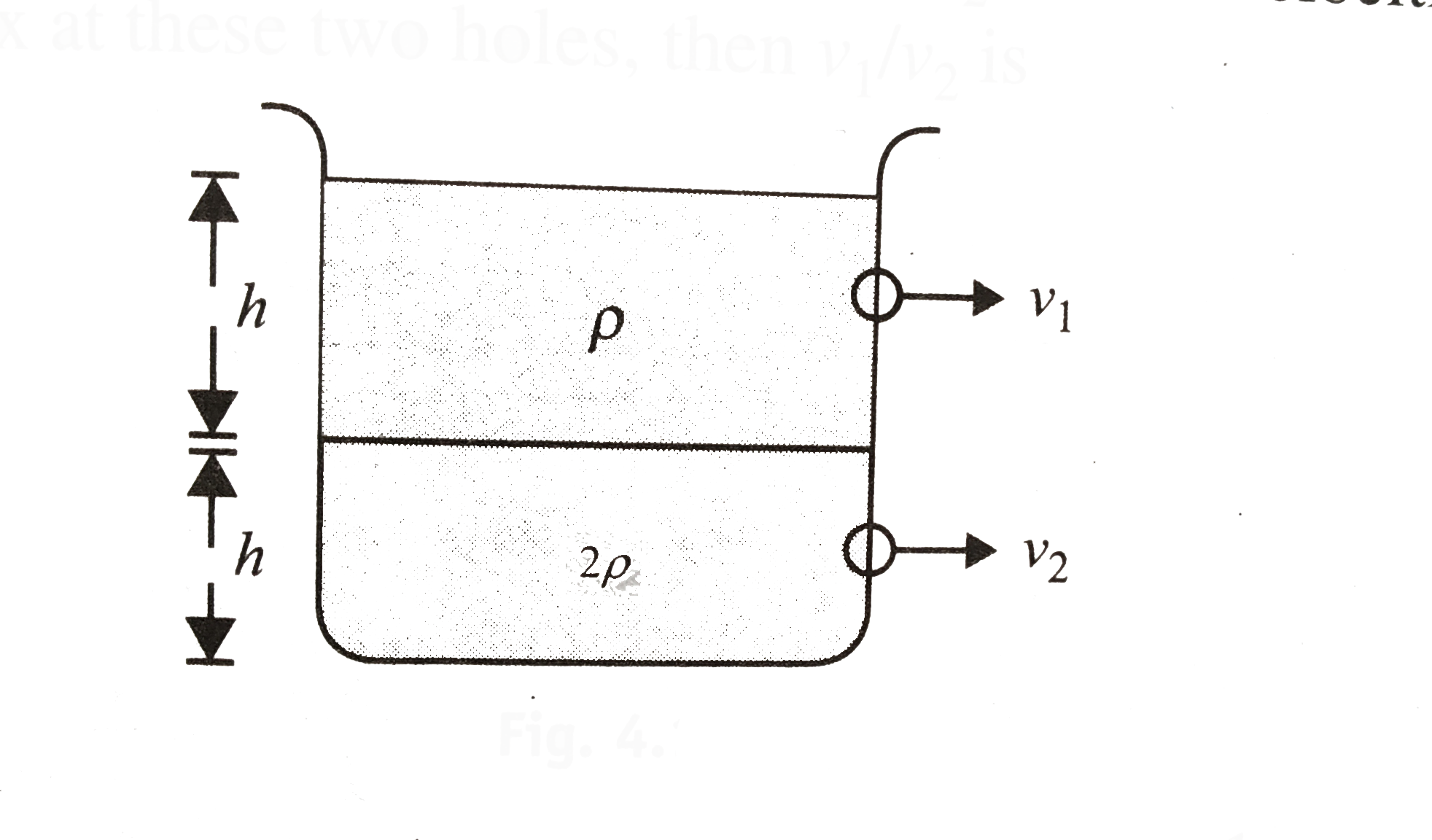A small body slides from rest along two equally rough circular surfaces from A to B through path 1 and 2 of equal radius if v1 and v2 are the speed of the block at point B via path (1) and (2) , then

v1>v2
v1<v2
v1=v2
can't be predicted
The correct Answer is:A
Step by step video, text & image solution for A small body slides from rest along two equally rough circular surfaces from A to B through path 1 and 2 of equal radius if v_(1) and v_(2) are the speed of the block at point B via path (1) and (2) , then by Physics experts to help you in doubts & scoring excellent marks in Class 12 exams.
Updated on:21/07/2023Topper's Solved these Questions
- WORK, ENERGY AND POWER BOOK - FIITJEECHAPTER - WORK, ENERGY AND POWER EXERCISE - ASSIGNMENT PROBLEMS ( OBJECTIVE) (LEVEL-I) (ASSERTION REASONING TYPE)
2 Videos
- WORK, ENERGY AND POWER BOOK - FIITJEECHAPTER - WORK, ENERGY AND POWER EXERCISE - ASSIGNMENT PROBLEMS ( OBJECTIVE) (LEVEL-II)
19 Videos
- WORK, ENERGY AND POWER BOOK - FIITJEECHAPTER - WORK, ENERGY AND POWER EXERCISE - ASSIGNMENT PROBLEMS ( SUBJECTIVE) (LEVEL-II & III)
15 Videos
- TEST PAPERSBOOK - FIITJEECHAPTER - TEST PAPERSEXERCISE - PHYSICS
747 Videos
Similar Questions
A small block is made to slide, starting from rest, along two equally rough circular surfaces from A to B through path 1 and 2. The two paths have equal radii. The speed of the block at the end of the slide was found to be V1 and V2 for path 1 and 2 respectively. Which one is larger V1 or V2?

View SolutionEqual volumes of two immiscible liquids of densities ρand2ρ are filled in a vessel as shown in figure. Two small holes are punched at depth h/2 and 3h/2 from the surface of lighter liquid. If v1andv2 are the velocities of efflux at these two holes then (v2v1)2 is

View Solution
Knowledge Check
Equal volume of two immiscible liquids of densities ρ and 2ρ are filled in a vessel as shown in the figure. Two small holes are punched at depths h/2 and 3h/2 from the surface of lighter liquid. If v1 and v2 are the velocities of efflux at these two holes, then v1/v2 is
 A12√2B12C14D1√2
A12√2B12C14D1√2Two particles of equal masses are revolving in circular paths of radii r1 and r2 respectively with the same speed. The ratio of their centripetal force is
Ar2r1B√r2r1C(r1r2)2D(r2r1)2A gas of given mass, is brought from stage A to B along three paths 1, 2 and 3, as shown in the figure. If the amount of work done in these three processes is respectively equal to W1,W2 and W3, then–
 AW1>W2>W3BW1<W2<W3CW1=W2=W3DW1<W2,W3<W2
AW1>W2>W3BW1<W2<W3CW1=W2=W3DW1<W2,W3<W2
When a body slides down from rest along a smooth inclined plane making an angle of 30∘ with the horizontal, it takes time T. When the same body slides down from the rest along a rough inclined plane making the same angle and through the same distance, it takes time aT, where a is a constant greater than 1. The co-efficient of friction between the body and the rough plane is 1√x(a2−1a2) where x = ________.
View SolutionIn fig. a ball of mass m1 and a block of mass m2 are joined together with an inextensible string. The ball can slide on a smooth horizontal surface. If v1 and v2 are the respective speeds of the ball and the block, then determine the constraint relation between the two.

View SolutionA small cube of mass m slides down a circular path of radius R cut into a large block of mass M. M rests on a table and both blocks move without friction. The blocks initially are at rest and m starts from the top of the path. Find the velocity v of the cube as it leaves the block.

View SolutionA system is taken from state A to state B along two different paths 1 and 2 . The heat absorbed and work done by the system along these two paths are Q1 and W1 and W2 respectively.
View SolutionA particle is moving on a circular path of radius R with constant speed v. During motion of the particle form point A to point B

View Solution
